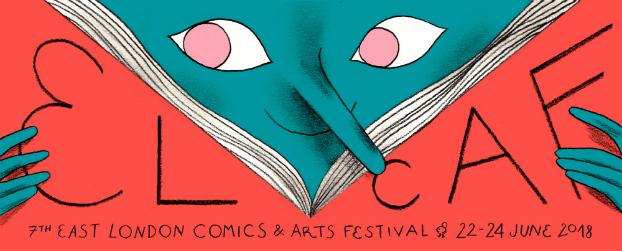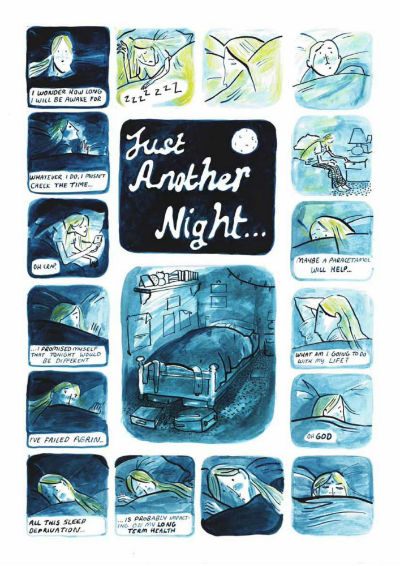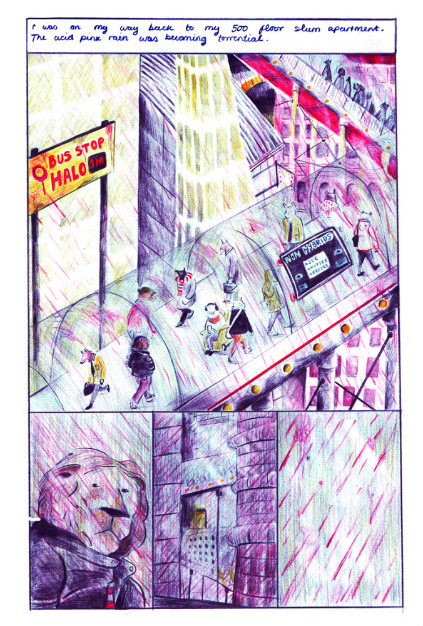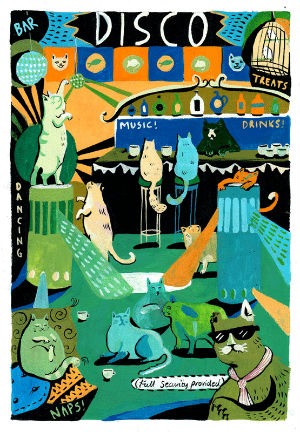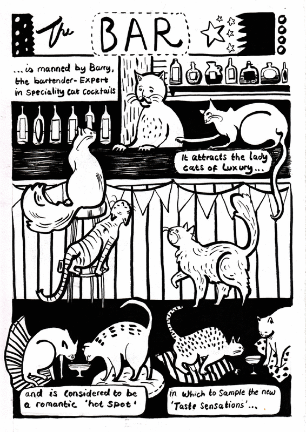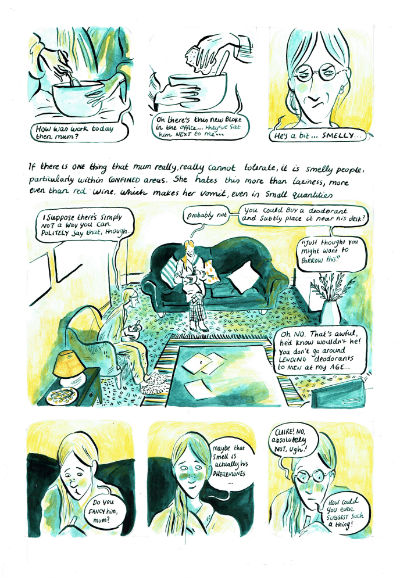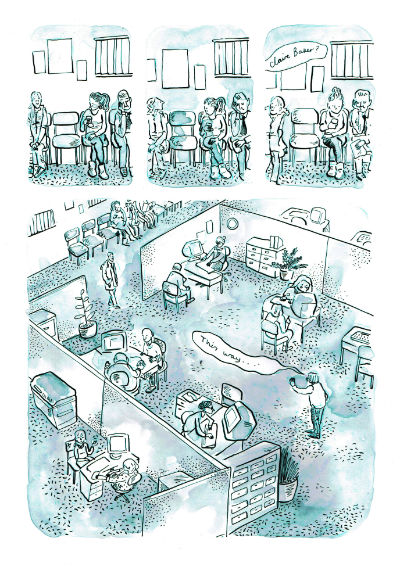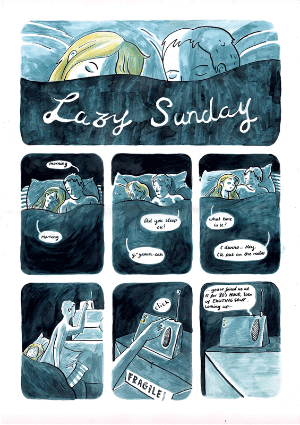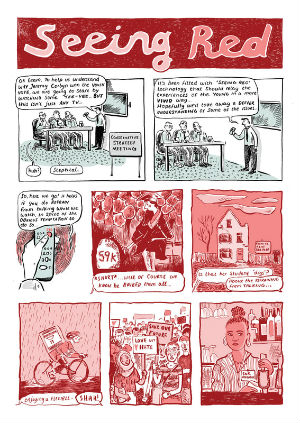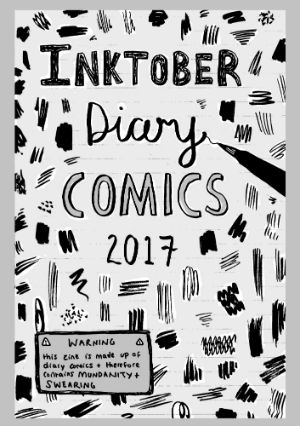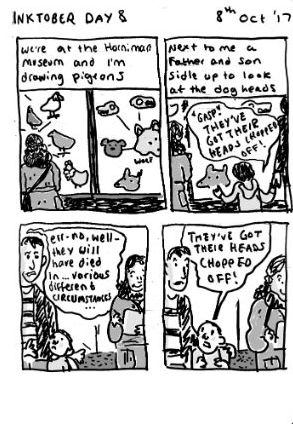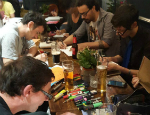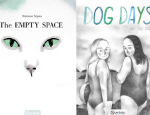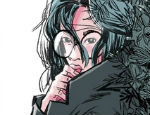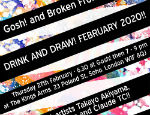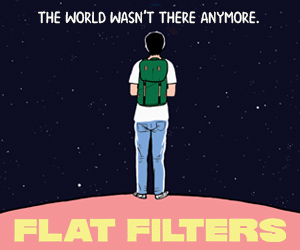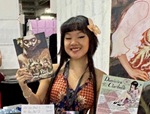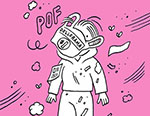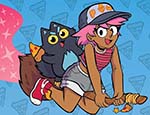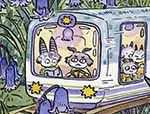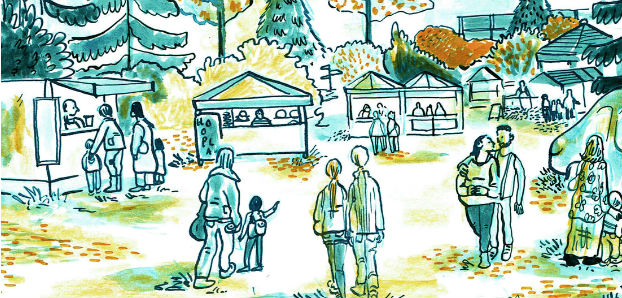
ELCAF FORTNIGHT!
Rebecca K. Jones is a London-based illustrator and comic artist, recently shortlisted for the Laydeez do Comics prize for her graphic novel project Boomerang. Her work addresses contemporary social and economic issues with a light touch and a relatable pathos, while in other strands of her practice she embraces the downright silly in the ongoing Cat Disco. She has used a great range of techniques to apply colour to her various comic projects, as well as some very striking monochrome work.
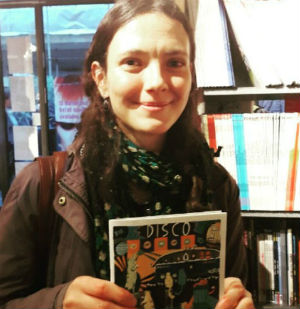 Anthropomorphism is a common theme, from a lion-headed commuter for Tiny Pencil, to the majestically painted Whale of her 2012 24-hour comic, while in Night Out and Beach the boundaries between human and animal blur in more subtle and macabre ways. Even Jones’ fully real world comics have a sense of slight wildness about them, her characters like subjects of a nature documentary – startled by their own circumstances and all the more human because of it.
Anthropomorphism is a common theme, from a lion-headed commuter for Tiny Pencil, to the majestically painted Whale of her 2012 24-hour comic, while in Night Out and Beach the boundaries between human and animal blur in more subtle and macabre ways. Even Jones’ fully real world comics have a sense of slight wildness about them, her characters like subjects of a nature documentary – startled by their own circumstances and all the more human because of it.
We spoke to Rebecca ahead of her appearance at the East London Comics and Arts Festival…
BROKEN FRONTIER: Your comics output over the last 5 years has been quite varied in subject matter, although consistently wry and whimsical with beautiful painterly line-work. Can you give us a brief overview of your work to date?
REBECCA K. JONES: I started seriously making comics after finishing an MA in illustration at Falmouth University – during that time I had been very tentatively exploring comics, but was maybe talking about them more than I was actually making them. I took part in a couple of 24-hour comics and started making cat comics as part of a collaborative blog called Cats vs Bunnies, which is when I began making Cat Disco.
I then started making some comics-themed around the housing crisis including a 4-page comic Lazy Sunday. I compiled them into a short zine called Let’s Go Home. It was around this time that I started working on my graphic novel project, Boomerang.
The Laydeez do Comics Prize-nominated Boomerang
BF: How would you say your practice has developed over this time?
JONES: It has probably become a bit less self-conscious, mostly in terms of the writing and subject matter. I have started to consider more what I want to incorporate into my work. I had a real apprehension towards writing for a while, and then realised how much I enjoyed it.
I’ve also become more aware that when I’m working on something that feels quite weighty, I need some kind of silly outlet side project to work on alongside it (e.g, like dancing cats).
Rebecca’s work from Tiny Pencil: The Cosmic Issue
BF: Do you see these two threads of your comic work feeding into each other?
JONES: I’m not sure, but I’d like to think that they could. Being able to play with a piece of work and be a bit silly can create moments of spontaneity and humour and it can be a really joyful thing. One or two of my favourite scenes from Boomerang have come about in that way, but I don’t always find it easy to get into that head space!
BF: There are a lot of cats in your work, do you have some real cats in your life?
JONES: Sadly no… all the residual energy and care I would pour into a cat is instead spent drawing them in comics.
BF: Cat Disco (above) tells the ongoing adventures of a stay at home cat experiencing life in the feline fast lane and is well worth checking out on tumblr .
In Boomerang (below) you tell the story of Claire, a recent graduate returned to live with her mother in 2009, shortly after the financial crisis. While this is a deeply personal story of circumstance and mental health, it obviously has political and social themes too, is it important for you to combine the two?
JONES: Yes absolutely. One of the things that makes Boomerang feel fulfilling as a project was being able to include social and political themes amongst the personal experiences. I saved quite a lot of articles, especially when starting the story and this helped to create more general and fictional elements, which provided a crucial layer of distance from myself and the character.
While there have been a lot (to put it mildly), of political and societal changes, since 2009, I hope I can express something about the climate at that time – the sense of hope leading up to it (in terms of education), and potentially alluding to what has happened since.
BF: Claire is a psychology graduate, rather than an artist, is this a field you are interested in? Did this help you distance the character from yourself?
JONES: I suppose I created her as a bit of an alter ego, having enjoyed both psychology and sociology at sixth form. I don’t know if I’m imagining this, but it seems to crop up in a lot of film/TV shows where a character is either learning or teaching psychology and the content of a lecture, for example, is used as part of the narrative device. So, I’m hopeful that it can feed into some of the themes of the book without looking too contrived! It has given me an excuse to read through text books and live vicariously a little.
It’s quite refreshing, because I don’t have to put in great long sections of her worrying about her art practice. In that sense, it’s a constant reminder of the distance between myself and the character so it prompts me to question her actions and motivations as I’m writing.
BF: Do you think experiences for recent graduates would differ greatly from Claire’s?
JONES: Perhaps a little and it probably also depends on their field of study. The current climate and high tuition fees has placed a huge amount of pressure on young graduates, so much so that both access to and demand for art and humanities subjects are declining. Now, there is a growing but more unstable economy with lots of insecure part-time work, higher debts and unaffordable housing.
BF: As creatives, perhaps even more than for other people, we often feel under pressure to project an image of success, to attract clients. Did this make tackling unemployment harder for you? Is it a topic you think we should discuss more visibly in the creative fields?
JONES: Looking back at it retrospectively has made it easier to explore the issues – I don’t think I could have written this to be honest, while during a period of unemployment as it would have felt too close to the bone.
When I started to write the story, I thought why would anyone possibly want to read this story that is about mundanity and failure? It gave me quite a few false starts and I created a lot the work and initial ideas quite privately to begin with and didn’t share too much of it online.
Creative careers are generally more difficult and uncertain in that respect as there is not a defined career path, so sometimes a period of unemployment is implicit in that path. Constantly projecting an image of success can be quite exhausting and potentially quite isolating too, especially on social media, so being able to share genuine experiences can alleviate some of that pressure. In drawing/writing comics there has to be some kind of emotional truth to make it worthwhile and sustainable, both to make and to read.
‘Lazy Sunday’ and Rebecca’s story ‘Seeing Red’ in SelfMadeHero’s Corbyn Comic Book
BF: Boomerang was shortlisted for the Laydeez do Comics prize this year (congrats), and you’ve previously been shortlisted with Lazy Sunday for the Cape/Observer/Comica Graphic Short Story Prize. Can you say a bit about how you think these competitions have shaped your practice and how important they are to the industry?
JONES: The Cape/Observer/Comica competition gave me a confidence boost, and propelled me to start a bigger project and to theme it around social issues. The Laydeez do Comics competition has encouraged me to continue working on Boomerang and to actively promote it a bit more. Before that I had been working on Boomerang for 2 years and I was struggling to look back on my work objectively. This competition in particular was really wonderful for meeting and connecting with other creators, and sharing experiences and gave a real sense of community.
Both competitions are a great opportunity for creators to either showcase existing work, or to motivate us to make something new, to gain exposure and to discover new creators in the industry. It is also a chance to share the world of comics with family, friends and acquaintances which can bring new readers to the comics medium.
BF: What will you be bringing to ELCAF? Anything new?
JONES: I’ll be bringing a collection of diary comics which I drew as part of Inktober in 2017 – I’m just in the process of organising these and getting them printed. I’ll have some more copies available of the first 12 pages of Boomerang as a zine, and hopefully, some Cat Disco t-shirts.
I am very excited about cat disco t-shirts. If you can’t make it to ELCAF you can pick up some of Rebecca’s wares at her Etsy site here and see more of her work at her website here. You can follow her on Twitter here.
Rebecca K. Jones will be exhibiting at ELCAF.
Catch up on all our ELCAF Fortnight articles to date here. ELCAF runs from June 22nd-24th. Full details on the ELCAF site here and you can also follow the festival on Twitter here.
